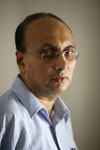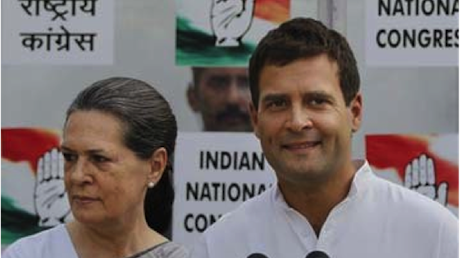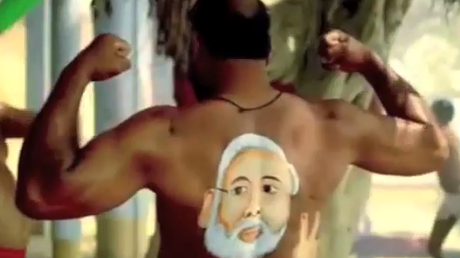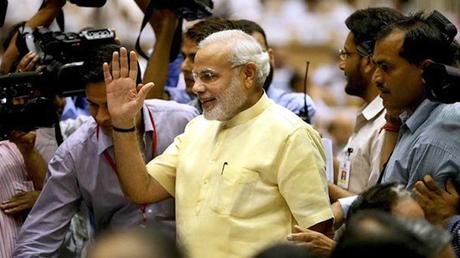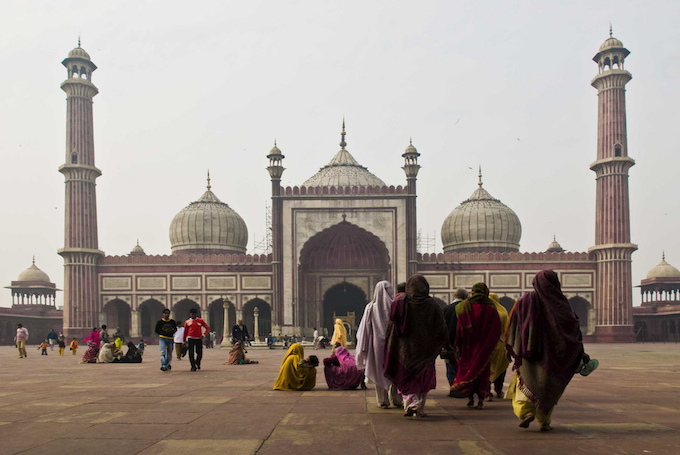Indians begin to file into ballot boxes to cast their votes in the nation's 16th parliamentary election - and the world's biggest exercise in democracy - next week, kicking off nine rounds of voting over five weeks.
Opinion polls and pre-election surveys carried out by polling agencies and media companies indicate the alliance led by the ruling Congress party is likely to be voted out. The Congress could lose as many as half its current seats – 206 – in the Lok Sabha or Lower House. In contrast, the main opposition party, the Bharatiya Janata Party or BJP, is predicted to see its numbers rise dramatically and finish with over 200 seats. The BJP-led alliance is expected to reach about 230-240 seats - or so the polls suggest.
This is the state of play as 800 million voters prepare to queue up outside polling stations. Election analysts often speak of a “bandwagon effect”, where the majority of last-minute, fence-sitting voters side with the party that is in the lead and expected to win. Should the bandwagon effect become influential in the coming month, and should the BJP’s advantage be as pronounced as polls reckon it is, then it is possible that the opposition alliance may inch even closer to 272 seats, the halfway mark in the Lok Sabha. That would make Narendra Modi, the BJP’s prime ministerial candidate and Hindu nationalist, head of the next government in New Delhi.
But a key question is just how accurate opinion polls can ever really be in taking the pulse of such a massive and diverse constituency as India. Polls in India have a mixed record. They have been both remarkably accurate and they have gone horribly wide of the mark. In 2009 they underestimated the Congress’ gains and almost uniformly gave it fewer than the 206 seats in finally won. In particular, they misread the big, pivotal state of Uttar Pradesh (80 seats), where the Congress surprised even itself by winning 22 seats.
Indian pollsters have now developed variants of polling models used in bipolar democracies and can track vote share fairly accurately even in multi-cornered contests.
Broadly speaking opinion polls in India have been right while attempting to foretell verdicts in state elections involving a direct contest between two parties or alliances. This is not surprising as most opinion polling models in other democracies – Australia, Britain, the United States – are geared towards measuring bipolar battles.
Indian elections are more complex, especially since the break-up of the Congress-dominated polity in the early 1990s. Today the BJP and the Congress have all-India footprints but complete (or partner) with several regional or state-specific parties in different parts of the country.
From the late 1990s, the confusion seemed to be easing. State after state began to devolve into a direct fight between two parties or two alliances. If it was the Telugu Desam and the Congress in Andhra Pradesh, it was the Trinamool Congress and the Communist Party of India (Marxist) or CPI(M) in West Bengal; and the Janata Dal (United) or JD(U) and the Rashtriya Janata Dal or RJD (and their respective allies) in Bihar.
The outlier was Uttar Pradesh, where four parties took on each other – the BJP, the Congress, the Samajwadi Party or SP and the Bahujan Samaj Party or BSP.
In a two-way contest, attempting a conversion of vote share to seat projection can be straightforward and lead to at least the right trend, if not the right numbers.
In a three or four-way election, it is a minefield. What is particularly piquant about the 2014 election is that not only is Uttar Pradesh a four-sided contest – as it has been for 20 years now – but that several other major states, which had settled into bipolarity, have regressed to being multipolar.
Three examples stand out:
- Bihar (40 seats) will see competition between the JD(U), the RJD and the BJP. In 2009, the JD(U) and the BJP were partners.
- Andhra Pradesh (42 seats) will see competition between the Congress, at least two breakaway parties from the Congress, the Telugu Desam and the BJP (which are probably allying) and the Telangana Rashtra Samiti (TRS), a resurgent sub-regional party.
- Tamil Nadu (39 seats) will see a battle between the two state parties that have dominated the state since the 1970s. However a new alliance, cobbled together by the BJP and some smaller parties, has injected an imponderable.
If one adds Uttar Pradesh’s 80 seats to this list, it means there are 201 seats across four states where multi-cornered contests will make estimations of how votes translate into seats an extremely hazardous enterprise.
No wonder India’s pollsters are keeping fingers crossed.


